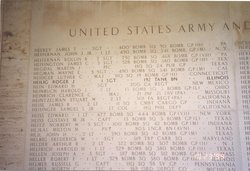A native of California, then Capt. Heisinger was serving as a judge advocate on the three-lawyer Board of Review in the Philippine Department when World War II began. He was promoted to major in April 1942 and was taken prisoner by the Japanese after Gen. Wainwright surrendered all American forces on May 6, 1942.
Heisinger was imprisoned briefly at Bilibid prison in Manila before being moved to Cabanatuan. In early November 1942, he was moved to a prisoner of war camp on Mindanao where he remained until June 1944. At that time, the Japanese decided to move Heisinger and others prisoners to Japan. On December 14, 1944, he was on the Oryoku Maru, the last prisoner transport ship to leave Manila. The next day, the vessel was attacked and sunk in Subic Bay by American aircraft from the USS Hornet; the pilots and aircrew did not know that U.S. prisoners of war were aboard the Oryoku Maru because the Japanese had failed to mark the vessel as required by customary international law.
About 300 prisoners died in the attack. Heisinger was lucky; he survived. He subsequently was on board the Enoura Maru and on the way to a camp in Japan when he died on January 9, 1945. He was 42 years old. The cause of Heisinger's death was malnutrition, malaria, colitis and dysentery.
The Japanese buried Heisinger in a mass grave on the island of Taiwan. After World War II, these remains were removed to the Punchbowl Cemetery in Hawaii.
The War Department posthumously promoted Heisinger to lieutenant colonel and awarded him the Bronze Star Medal for meritorious service and the Purple Heart.
A native of California, then Capt. Heisinger was serving as a judge advocate on the three-lawyer Board of Review in the Philippine Department when World War II began. He was promoted to major in April 1942 and was taken prisoner by the Japanese after Gen. Wainwright surrendered all American forces on May 6, 1942.
Heisinger was imprisoned briefly at Bilibid prison in Manila before being moved to Cabanatuan. In early November 1942, he was moved to a prisoner of war camp on Mindanao where he remained until June 1944. At that time, the Japanese decided to move Heisinger and others prisoners to Japan. On December 14, 1944, he was on the Oryoku Maru, the last prisoner transport ship to leave Manila. The next day, the vessel was attacked and sunk in Subic Bay by American aircraft from the USS Hornet; the pilots and aircrew did not know that U.S. prisoners of war were aboard the Oryoku Maru because the Japanese had failed to mark the vessel as required by customary international law.
About 300 prisoners died in the attack. Heisinger was lucky; he survived. He subsequently was on board the Enoura Maru and on the way to a camp in Japan when he died on January 9, 1945. He was 42 years old. The cause of Heisinger's death was malnutrition, malaria, colitis and dysentery.
The Japanese buried Heisinger in a mass grave on the island of Taiwan. After World War II, these remains were removed to the Punchbowl Cemetery in Hawaii.
The War Department posthumously promoted Heisinger to lieutenant colonel and awarded him the Bronze Star Medal for meritorious service and the Purple Heart.
Gravesite Details
Died as a prisoner of war held by the Japanese. Buried in a mass grave in Takao, as it was then known. After war the remains were repatriated to the Punchbowl. in Hawaii.


